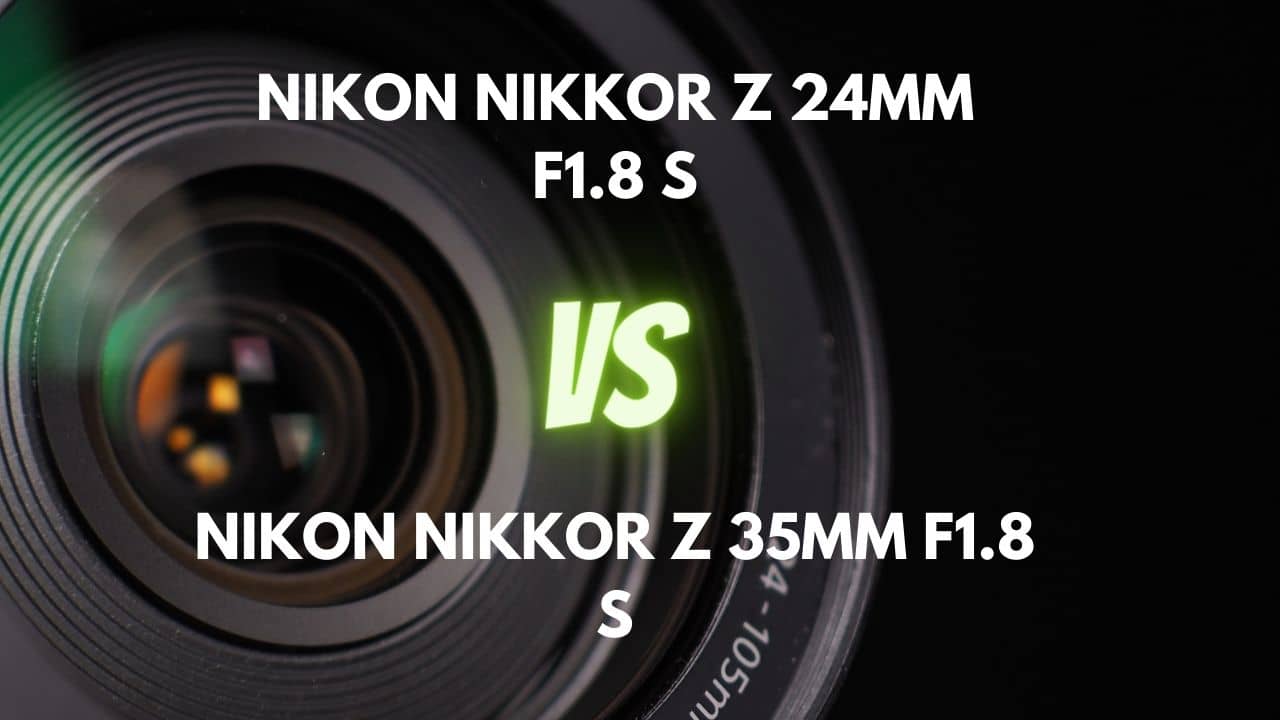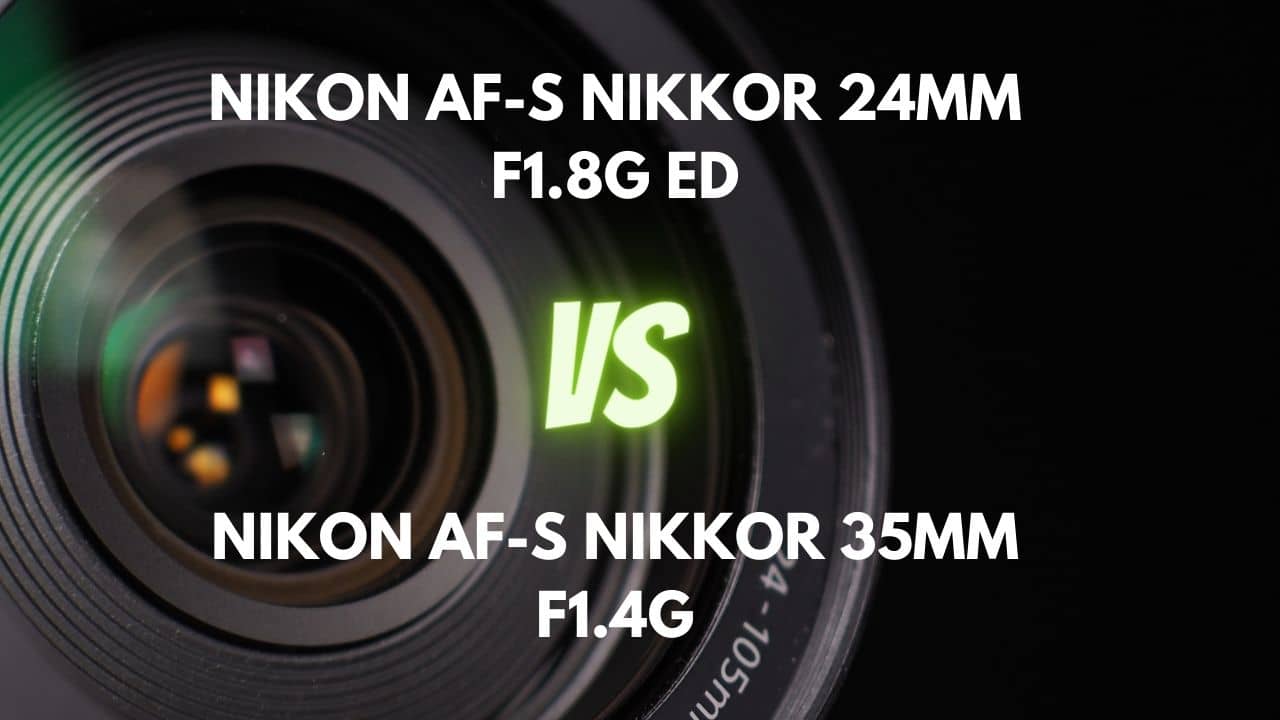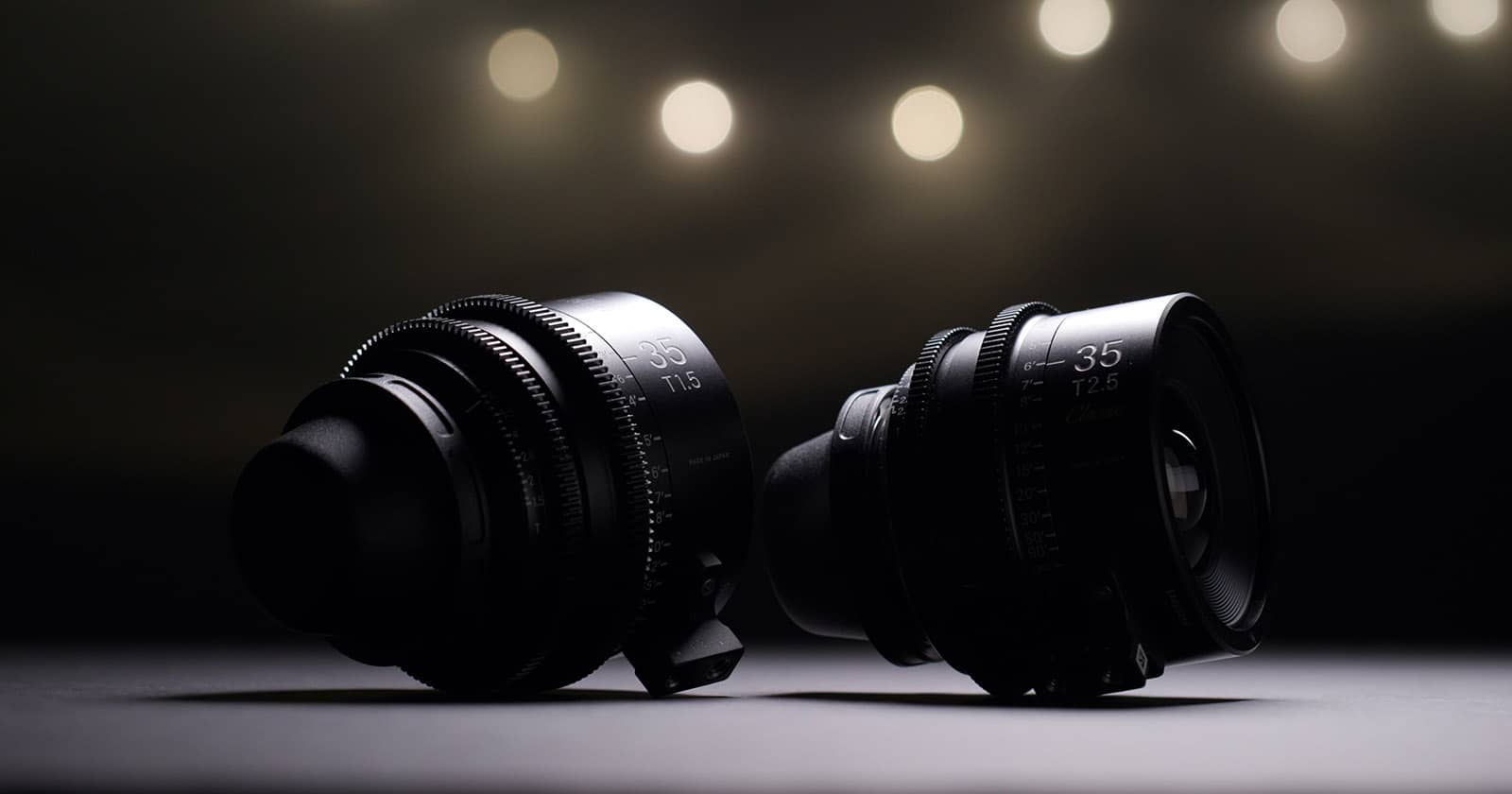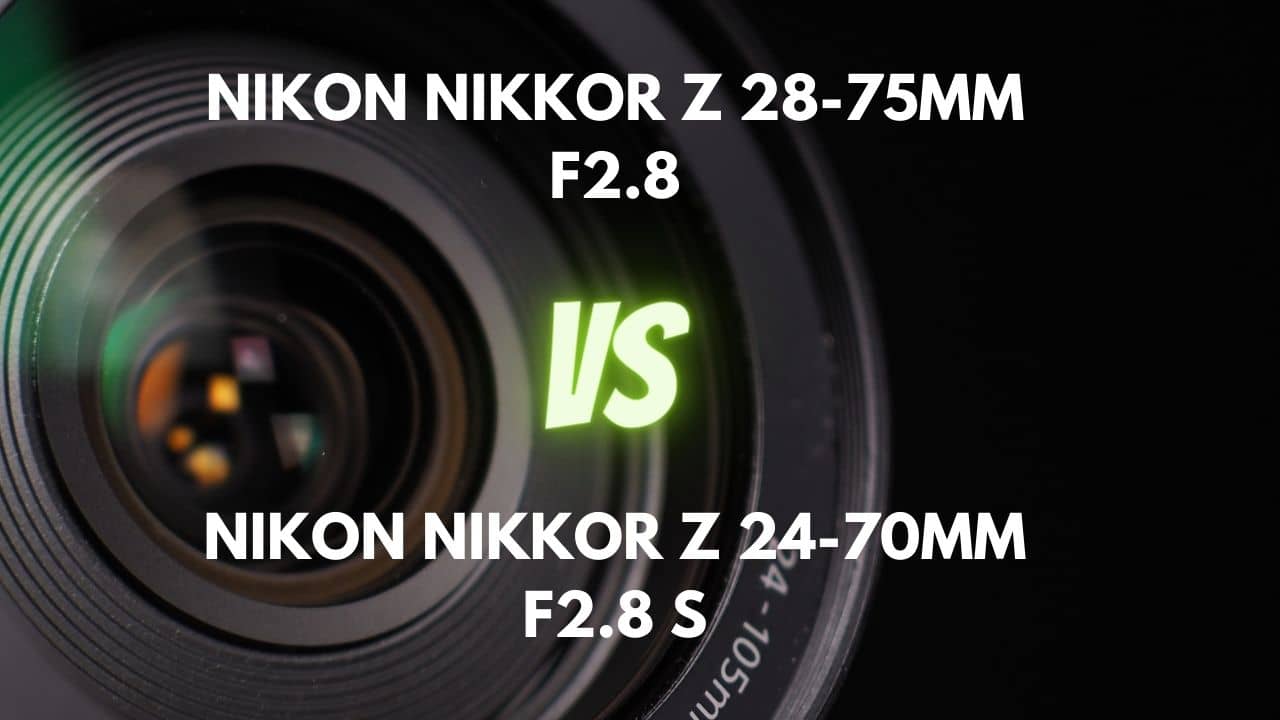The 35mm lens is a great focal length considering its versatility and application in various photography situations.
The 35mm is slightly wider than the human eye’s angle of view. It’s suitable for many photography genres, including but not limited to weddings, architecture, interiors, group shots, street photography, landscapes, and many others.
I’m slightly biased toward the 50mm prime because it is my favorite focal length for shooting photos. But the 35mm is equally good, and in some cases, it’s more versatile than the 50mm prime.
While the 50mm is more suitable for people who prefer to stay back and therefore optimize the extended focal Length, the 35mm is best suited for people who love to work their scene and are not afraid to use their feet to zoom.
Many of you would argue that there is not much difference between the 50mm and the 35mm in angular view. But I would say that 15mm is a lot for wide-angle shooting. Especially in tight areas where there is very little room to maneuver.
But as the 35mm captures a wider slice of the scene, you need to work in a situation where you have a lot of space to work with.
In this discussion, we shall work with the best 35mm lenses for Nikon cameras. We will look at lenses that are designed for the entire frame as well as those that are designed for crop sensor cameras.
What are the best 35mm lenses for Nikon?
Nikon AF-S NIKKOR 35mm f/1.8G ED

Features
- Focal Length – 35mm
- Maximum aperture – f/1.8
- Minimum aperture – f/16
- Lens Mount – Nikon F
- Lens Format Coverage – Full-Frame
- Angle of View – 63°
- Minimum Focus Distance – 9.84″ / 25 cm
- Maximum Magnification – 0.16x
- Optical Design – 11 Elements in 8 Groups
- Diaphragm Blades – 7, Rounded
- Focus Type – Autofocus
- Image Stabilization – No
- Filter Size – 58 mm (Front)
- Dimensions (ø x L) – 2.83 x 2.81″ / 71.88 x 71.37 mm
- Weight – 10.76 oz / 305 g
Pros
- Fast wide aperture of f/1.8.
- Features silent wave motor powered autofocusing technology.
- Full-time manual focusing override for precise manual focusing.
- Super integrated coating for suppressing ghosting and flares.
Cons
- Vignetting is apparent at wide aperture.
- Chromatic aberrations are present even when the lens is stopped down.
- No image stabilization.
- No weather sealing.
The major USP of the AF-S NIKKOR 35mm f/1.8G ED is the fast wide aperture. At 305 grams, the lens isn’t too heavy and is well-built.
However, there is no weather sealing or image stabilization on the lens. You’ve to be careful when using this lens outdoors. The lens shouldn’t be exposed to bad weather or dusty conditions.
The performance of this lens is superb. Considering the price tag, this is a bargain if you’re looking for a decent-performing f/1.8 lens.
Its overall sharpness, color accuracy, and contrast levels are excellent.
If you compare this lens with Nikon’s own f/1.4G (discussed below) and the Sigma 35mm Art f/1.4 (also discussed below), this is at par with the performance, which speaks volumes about this lens.
There are a few issues with this lens; one is the presence of chromatic aberrations, which is persistent even when the lens is dropped down. However, this isn’t something terrible, as you can always correct this in the post.
Nikon AF-S NIKKOR 35mm f/1.4G
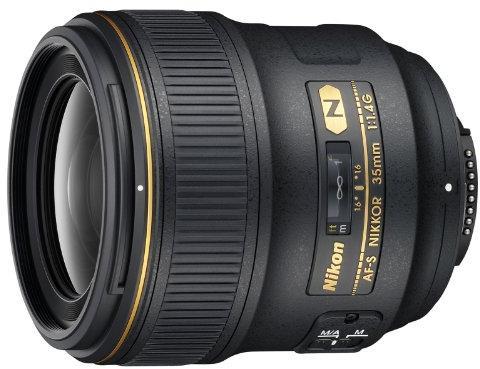
Features
- Focal Length – 35mm
- Maximum aperture – f/1.4
- Minimum aperture – f/16
- Lens Mount – Nikon F
- Lens Format Coverage – Full-Frame
- Angle of View – 63°
- Minimum Focus Distance – 11.81″ / 30 cm
- Maximum Magnification – 0.2x
- Optical Design – 10 Elements in 7 Groups
- Diaphragm Blades – 9, Rounded
- Focus Type – Autofocus
- Image Stabilization – No
- Filter Size – 67 mm (Front)
- Dimensions (ø x L) – 3.27 x 3.52″ / 83 x 89.5 mm
- Weight – 1.32 lb / 600 g
Pros
- Fast aperture of f/1.4
- Excellent flare resistance
- Dust and weather sealing
The shape of the bokeh is very nice.
Cons
- Pretty heavy for a 35mm lens.
- No body-based image stabilization.
The 35mm f/1.4 takes the legacy of Nikon’s f/1.4 lenses a step forward.
The 35mm isn’t my favorite, as I have mentioned above. I prefer the 50mm more. But in some situations, the 35mm is more advantageous than the 50mm, including weddings, group shots, and interiors.
The 35mm is optically very sharp. Colors render well straight out of the camera.
Compared with 35mm f/1.8, this lens caters to the professional photographer crowd, featuring a weather-sealed metal body allowing them to work under harsh conditions.
Talking about the cons of this lens, this isn’t as light as some of the other 35mm lenses available on the market.
The 35mm f/1.8 I discuss above is lighter and optically similar performing than the 35mm f/1.4. Speaking of weight, the Sigma 35mm f/1.4 Art that I discussed below is even heavier than the Nikon 35mm f/1.4.
This lens features a Nano crystal coating that reduce the effects of ghosting and flares, which improve color accuracy and contrast.
Many of you have a crop Nikon camera and might be interested in finding out how this lens performs on a crop camera.
I wouldn’t recommend this lens for a DX camera because the price you pay will not give you the kind of returns that will make this investment worth the while. You will be better off buying the Nikon AF-S DX NIKKOR 35mm f/1.8G. I will discuss that lens later in this article.
Sigma 35mm f/1.4 DG HSM Art
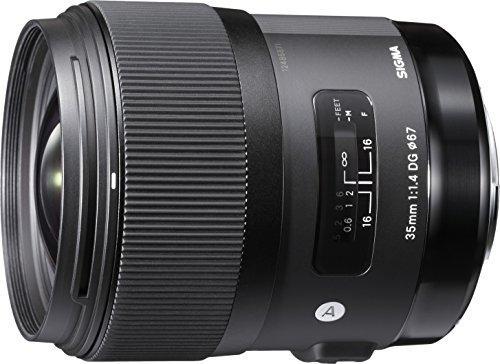
Features
- Focal Length – 35mm
- Maximum Aperture – f/1.4
- Minimum Aperture – f/16
- Lens Mount – Nikon F
- Lens Format Coverage – Full-Frame
- Angle of View – 63.4°
- Minimum Focus Distance – 11.81″ / 30 cm
- Maximum Magnification – 0.19x
- Optical Design – 13 Elements in 11 Groups
- Diaphragm Blades – 9, Rounded
- Focus Type – Autofocus
- Image Stabilization – No
- Filter Size – 67 mm (Front)
- Dimensions (ø x L) – 3.03 x 3.7″ / 77 x 94 mm
- Weight – 1.46 lb / 665 g
Pros
- Optically one of the best lenses that you can lay your hands on.
- Superb center performance even wide open at f/1.4
Cons
- One of the heaviest 35mm on this list.
- No weather sealing on the lens.
If you’re looking for a third-party 35mm compatible with your Nikon full-frame camera, then the Sigma 35mm f/1.4 DG HSM Art will not disappoint you.
Arguably the best 35mm on this list, the Sigma 35mm f/1.4 DG HSM Art offers the perfect combination of price and performance despite being a third-party lens and the weight factor that works against it.
This is the heaviest of the three 35mm lenses that I have discussed thus far on this list.
Optically this is a fantastic lens to work with. The center of the frame is very sharp and something that other lenses struggle to replicate.
The overall distortion level is extremely low, and there have been no chromatic aberrations to be bothered about. A word about the lens autofocusing performance is perfect, and the focus lock is pretty accurate for such a wide-open lens.
The only thing that works against the lens is that the weight of the lens is the heaviest among all the above three 35mm lenses I have mentioned so far.
Nevertheless, the Sigma is pretty much the same as the Nikon 35mm f/1.4 that I have mentioned above, at half the price.
Nikon AF-S DX NIKKOR 35mm f/1.8G
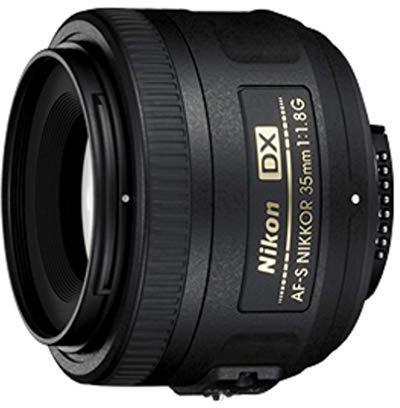
Features
- Focal Length – 35mm (35mm Equivalent Focal Length: 52.5mm)
- Maximum Aperture – f/1.8
- Minimum Aperture – f/22
- Lens Mount – Nikon F
- Lens Format Coverage – APS-C
- Angle of View – 44°
- Minimum Focus Distance – 11.81″ / 30 cm
- Maximum Magnification – 0.16x
- Optical Design – 8 Elements in 6 Groups
- Diaphragm Blades – 7, Rounded
- Focus Type – Autofocus
- Image Stabilization – No
- Filter Size – 52 mm (Front)
- Dimensions (ø x L) – 2.76 x 2.07″ / 70 x 52.5 mm
- Weight – 7.05 oz / 200 g
Pros
- Inexpensive lens for the features that the lens offers.
- Fast wide aperture of f/1.8.
- Super integrated coating for better color accuracy.
- Silent wave motor powered autofocusing system.
Cons
- No weather sealing.
- No image stabilization.
This lens is designed for the crop sensor Nikon cameras. If you’re on a crop sensor camera, buying this lens is advantageous because the image circle is optimized for the smaller sensor. However, the effective focal length becomes the equivalent of a 52.5mm lens in a 35mm format.
The main USP of the lens is the fast wide aperture of f/1.8. The lens can capture a lot of light in a short period. The lens is ideally suitable for working in low-light situations.
Plus, you can use this lens to isolate a subject and capture those shallow depth-of-field shots.
An SWM motor powers Autofocusing. This is ideally suitable for video work because the autofocusing performance is smooth rather than jerky.
The lens features a super-integrated coating that ensures that the lens can counter the effects of flares and ghosting. The result is superb optical performance, better color accuracy, and contrast.
ZEISS Milvus 35mm f/1.4 ZF.2
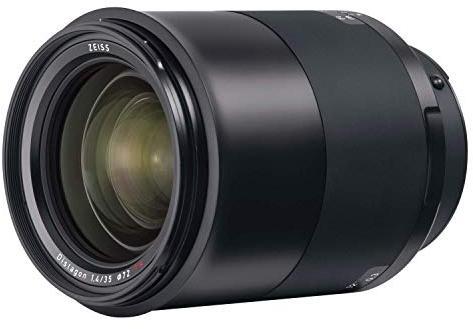
Features
- Focal Length – 35mm
- Maximum Aperture – f/1.4
- Minimum Aperture – f/16
- Lens Mount – Nikon F
- Lens Format Coverage – Full-Frame
- Angle of View – 65°
- Minimum Focus Distance – 11.81″ / 30 cm
- Maximum Magnification – 0.22x
- Optical Design – 14 Elements in 11 Groups
- Diaphragm Blades – 9, Rounded
- Focus Type – Manual Focus
- Image Stabilization – No
- Filter Size – 72 mm (Front)
- Dimensions (ø x L) – 3.35 x 4.96″ / 85 x 126 mm
- Weight – 2.49 lb / 1131 g
Pros
- Fast f/1.4 lens.
- Built like a tank
- Weather sealing gasket.
Cons
- Manual focusing lens.
- No image stabilization.
- Extremely pricey.
Does it make sense to go for a two thousand dollar behemoth when you’ve lenses like the Sigma 35mm f/1.4 DG HSM Art and the Nikon AF-S NIKKOR 35mm f/1.4G?
And also considering where there are even cheaper options such as the Nikon AF-S NIKKOR 35mm f/1.8G ED? Especially when the Zeiss optic is a manual focusing lens?
To start, this lens is built very well. It’s nearly an all-metal lens with exceptional build quality. Also, the lens comes with thorough weather sealing construction to fully protect from dust and moisture.
The lens is compatible with Nikon’s full-frame DSLR cameras, but other mounts are also available.
This is a heavy piece of optics weighing nearly 1200 grams. These aren’t your standard 35mm lenses. One thing that works against this lens is that this is a manual focusing lens.
Apart from the fact that there is no image stabilization on the lens, which averages for 35mm fast lenses, it has something that will not make cinematographers happy – focus breathing. If you’re using this lens for video work, keep this in mind.
The manual focusing ring has a lengthy throw, and the lens travels quite a bit which means focusing can be precise, and you will have to get used to these long throws of the ring.
The frame’s middle appears softer with less contrast when tested on high-resolution cameras. This is unacceptable compared to lenses like the Sigma 35mm f/1.4 DG HSM Art and the Nikon AF-S NIKKOR 35mm f/1.4G.
Even the corners are soft when looking closely. Sharpness improves when the lens is stopped down, and that’s when both the center of the frame and the corner look great.
Overall, I feel this lens will not suit you if you’re on a budget. You’re better choosing one of the lenses between the Sigma 35mm f/1.4 DG HSM Art and the Nikon AF-S NIKKOR 35mm f/1.4G or even the Nikon AF-S NIKKOR 35mm f/1.8G ED.
Nikon NIKKOR Z 35mm f/1.8 S
Features
- Focal Length – 35mm
- Maximum Aperture – f/1.8
- Minimum Aperture – f/16
- Lens Mount – Nikon Z
- Lens Format Coverage – Full-Frame
- Angle of View – 63°
- Minimum Focus Distance – 9.84″ / 25 cm
- Maximum Magnification – 0.19x
- Optical Design – 11 Elements in 9 Groups
- Diaphragm Blades – 9, Rounded
- Focus Type – Autofocus
- Image Stabilization – No
- Filter Size – 62 mm (Front)
- Dimensions (ø x L) – 2.87 x 3.39″ / 73 x 86 mm
- Weight – 13.05 oz / 370 g
Pros
- Lightweight.
- Maximum aperture of f/1.8
- Dust and moisture-resistant construction.
- Zero focus breathing.
Cons
- No image stabilization.
- Focus ring doesn’t give good feedback when turned.
This lens is designed for the Z mount’s APS-C and full-frame camera systems. The lens comprises 11 elements arranged in 9 groups and comes with weather sealing and a metal lens mount.
None of the 35mm lenses I have listed above come with image stabilization. And this lens, too, does not come with one. However, there is a difference. While the latest Nikon Z mount camera systems come with a body-based image stabilization system, the DSLR systems don’t have a body-based image stabilization system. Therefore you can enjoy image stabilization with the Z 35mm f/1.8 S.
The lens exhibits zero focus breathing, which is a significant advantage for someone shooting videos with this lens.
The lens is a bit softer at the corners than at the center of the frame when shot using the wide-open aperture. Stopping down the lens does improve the corner sharpness and contrast. The middle of the frame also improves.

